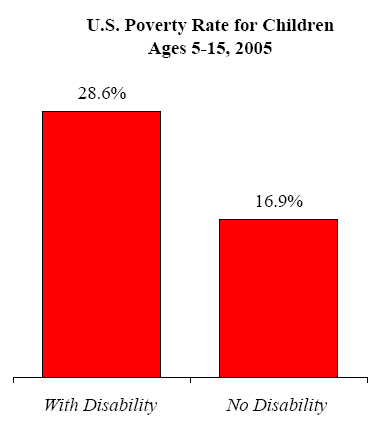
Advocates for children with disabilities are mostly unimpressed by Sarah Palin's profession of support for children with disabilities, based on her history and policy positions. But the attention generated by her use of the issue should be good for something.
In fact, disabilities play a large, and growing, role in the growing gulf between rich and poor in this country - and around the world, for that matter, as 80% of people with disabilities live in poor countries. In recent years, we have learned that the 1996 welfare reform put the squeeze on families where mothers and/or their children have disabilities. As a result of policy changes and the tightening job market, among single mothers with disabilities, fewer are employed and fewer are receiving any form of government assistance.

Source: Calculated from 2006 American Community Survey (U.S. Census Bureau).
The evidence on well-being among children with disabilities is consistent and distressing. In this country, children with disabilities are more likely to be poor, more likely to live with parents who have less education, and more likely to live in single-parent (especially single-mother) families - where the resources available to them are stretched to the limit.
A rigorous new study by Susan Parish and her colleagues at the University of North Carolina at Chapel Hill shows that our measurement of poverty is especially inadequate when it comes to identifying hardship among families where children have disabilities. Using high quality, nationally representative data, they found that not only are children with disabilities more likely to be poor, but even among those with higher-income families, children with disabilities were much more likely to experience food, housing, or medical hardships. The data illustrate a well-known feedback loop, through which poverty contributes to disabilities and disabilities increase poverty and hardship.
History shows us that the dog-eat-dog marketplace has a solution for people with disabilities, those who care for them, and others who are unable to compete effectively - but can't we find a better one?